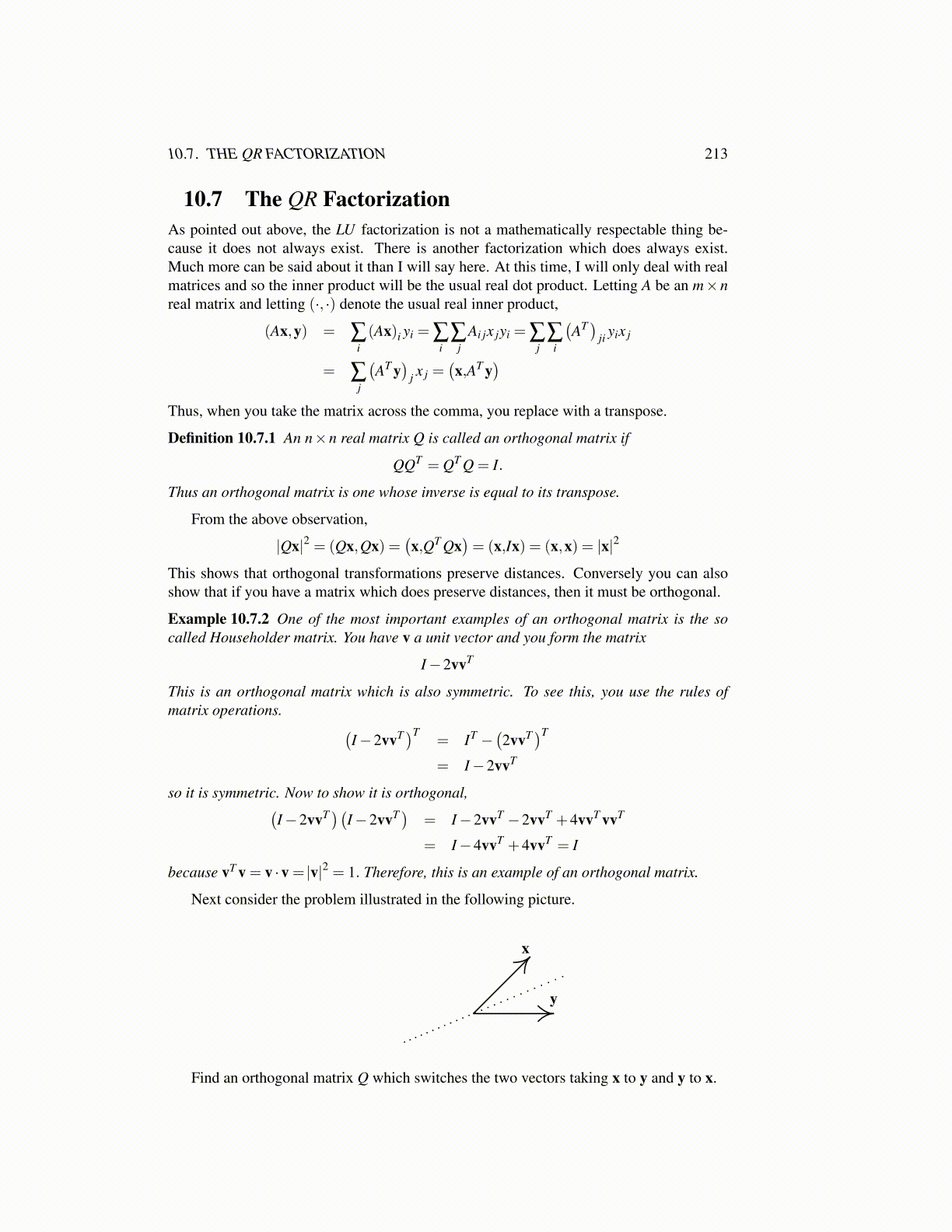
10.7. THE QR FACTORIZATION 213
10.7 The QR FactorizationAs pointed out above, the LU factorization is not a mathematically respectable thing be-cause it does not always exist. There is another factorization which does always exist.Much more can be said about it than I will say here. At this time, I will only deal with realmatrices and so the inner product will be the usual real dot product. Letting A be an m×nreal matrix and letting (·, ·) denote the usual real inner product,
(Ax,y) = ∑i(Ax)i yi = ∑
i∑
jAi jx jyi = ∑
j∑
i
(AT )
ji yix j
= ∑j
(AT y
)j x j =
(x,AT y
)Thus, when you take the matrix across the comma, you replace with a transpose.
Definition 10.7.1 An n×n real matrix Q is called an orthogonal matrix if
QQT = QT Q = I.
Thus an orthogonal matrix is one whose inverse is equal to its transpose.
From the above observation,
|Qx|2 = (Qx,Qx) =(x,QT Qx
)= (x,Ix) = (x,x) = |x|2
This shows that orthogonal transformations preserve distances. Conversely you can alsoshow that if you have a matrix which does preserve distances, then it must be orthogonal.
Example 10.7.2 One of the most important examples of an orthogonal matrix is the socalled Householder matrix. You have v a unit vector and you form the matrix
I−2vvT
This is an orthogonal matrix which is also symmetric. To see this, you use the rules ofmatrix operations. (
I−2vvT )T= IT −
(2vvT )T
= I−2vvT
so it is symmetric. Now to show it is orthogonal,(I−2vvT )(I−2vvT ) = I−2vvT −2vvT +4vvT vvT
= I−4vvT +4vvT = I
because vT v = v ·v = |v|2 = 1. Therefore, this is an example of an orthogonal matrix.
Next consider the problem illustrated in the following picture.
x
y
Find an orthogonal matrix Q which switches the two vectors taking x to y and y to x.